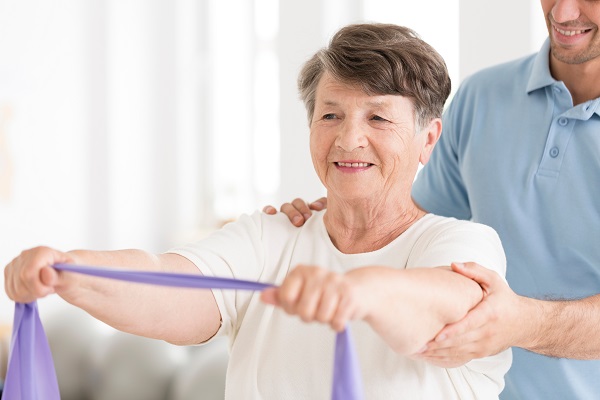Post-Stroke Rehabilitation

Learning more about how a stroke can affect your ability to perform everyday functions is a good idea. According to Stroke.org, stroke is the number five killer of all Americans and a leading cause of long-term adult disability, affecting more than 795,000 people a year.
Who treats stroke patients?
Wondering who to see after a stroke? A neurosurgeon is a medical professional who can provide stroke patients with a comprehensive treatment and rehabilitation plan. After someone suffers a stroke, it really is essential that an experienced neurosurgeon evaluates them as soon as possible. Neurosurgeons will create a personalized treatment plan for each individual patient, with the goal of providing each patient with an optimal chance for maximum recovery.
About post-stroke rehabilitation
The following list includes information on some of the more popular approaches for stroke rehabilitation.
Motor-skill exercises
Motor-skill exercises are exercises that have been developed in order to help patients improve their overall muscle strength. These exercises are also focused on helping the patient improve any coordination problems they are experiencing.
Mobility training
Mobility training is a type of rehabilitation that helps patients use any necessary mobility aids that will help them get around more easily. These mobility aids include things like walkers, walking canes and wheelchairs.
Range of motion therapy
There are a number of rehabilitation exercises that are completely focused on improving a patient's range of motion. These exercises are not only important so patients can once again perform their everyday activities, but they also help to ease any muscle tension the patient may be experiencing.
Constraint-induced therapy
Also called forced-use therapy, this type of rehabilitation requires a patient to not use any of their unaffected arms or legs, so they can focus on moving their affected limbs. This is necessary in order to help patients improve the functioning of arms or legs that were affected by the stroke.
When should stroke rehabilitation start and how long does it last?
Stroke rehabilitation should start as soon as possible after someone suffers a stroke. Stroke patients who start the rehabilitation process within a day or two after suffering a stroke are more likely to regain any lost abilities and skills. When it comes to how long stroke rehabilitation lasts, it simply depends on the severity of the stroke and the type of complications it has created. While there is no set amount of time, patients can expect to undergo rehabilitation for several months or longer.
Are you in need of post-stroke rehabilitation services?
If you recently experienced a stroke and are in need of rehabilitation services so you can once again perform your everyday activities, we invite you to contact us now for more information. The severity of your stroke will determine what type of rehabilitation services you need, so know that we can help you when it comes to understanding the type of rehabilitation services you need and the outcomes you can expect.
Request an appointment here: https://www.brainandspineni.com or call Brain and Spine Neuroscience Institute at (813) 751-2029 for an appointment in our Palm Harbor office.
Check out what others are saying about our services on Google: Read our Google Reviews.
Related Posts
A cerebral hemorrhage occurs when a blood vessel ruptures within the brain, leading to bleeding that damages surrounding tissue. This medical emergency is a form of stroke that requires immediate attention to prevent severe complications or long-term neurological effects. By understanding the causes and risk factors for cerebral hemorrhage, you can identify if you or…
A stroke treatment center acts fast when a neurological emergency strikes, delivering critical care when timing matters most. These specialized teams move quickly, utilizing advanced diagnostics, efficient procedures, and coordinated support to manage even the most complex stroke cases effectively. Through quality care, patients and their loved ones can find a clearer path to recovery…
Neurostimulation offers a targeted way to manage symptoms from certain neurological disorders by sending gentle signals to precise areas of the nervous system. With careful planning, neurostimulation can reduce tremors, limit seizures, alleviate chronic pain, and enhance daily function without requiring major incisions.Neurostimulation uses a small, implantable system or an external device to deliver controlled…
Stem cell treatment shows promise for helping with neurological disorders by repairing and regrowing damaged cells in the nervous system. This advanced therapy is still being studied for its ability to support healing at a cellular level, potentially improving the patient's quality of life and daily function. Nevertheless, with continued advancements in medical research and…
